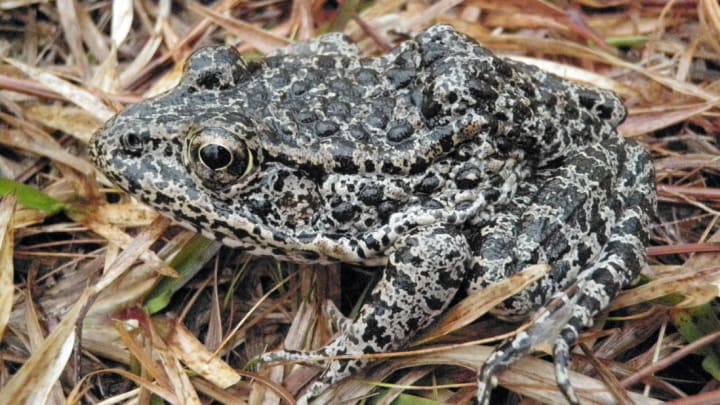The dusky gopher frog might not be much to look at. The species, which lives in a handful of Mississippi ponds, is covered in dark spots and warts. But it's one of the world’s most endangered frogs—and its fate is currently being debated in the country's highest court.
As Nature News and Comment reports, the Supreme Court started its new term on October 1, and one of the first cases on its docket involved the Endangered Species Act of 1973. The U.S. Fish and Wildlife Service (FWS) has a plan to save the frog by restoring ponds 50 miles west in Louisiana, where the frogs once lived, and move the remaining populations there. The dusky gopher frog, otherwise known as the Mississippi gopher frog or Lithobates sevosus, is threatened by development projects in Mississippi that have destroyed much of the amphibians' habitat. In 2012, the International Union for the Conservation of Nature named the frog one of the world's 100 most endangered species. Now, fewer than 100 of the frogs remain.
Conditions are more suitable in Louisiana's ephemeral ponds because they dry out at certain times of the year and can't support fish, which eat frogs' eggs, The Washington Post reports. The problem? The Louisiana ponds' other characteristics are not quite as agreeable as those in Mississippi, and the 1500-plus acres of land in question are owned by a family that leases them to the Weyerhaeuser timber company. Weyerhaeuser is arguing that it isn't required to alter the land to accommodate the frogs, and that doing so would result in the property being devalued by millions of dollars.
The Supreme Court is being asked to decide whether the government can designate privately owned land as a "critical habitat" even when the conditions are less than ideal for supporting an endangered species. Right now, the Endangered Species Act lets the government designate critical habitat only where the species can live and thrive in the present, not at some point in the future. The eight Supreme Court justices appeared evenly divided after hearing arguments this week, but they could wait to decide the case until a ninth justice is confirmed.
This case is only the fifth challenge to the Endangered Species Act to be heard before the Supreme Court, but the FWS and other government agencies are trying to weaken the act's protections in other ways. The court's decision in the dusky gopher frog case could determine how the government manages endangered species in the future.
[h/t Nature News and Comment]
